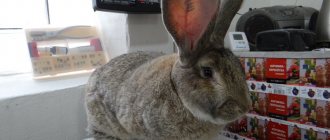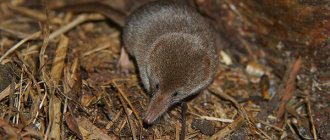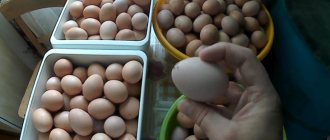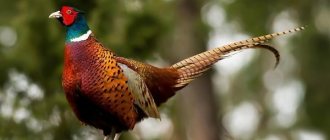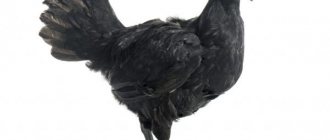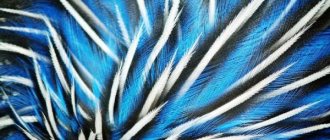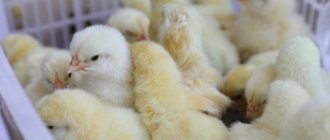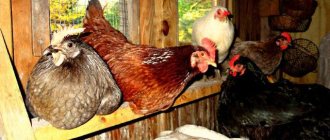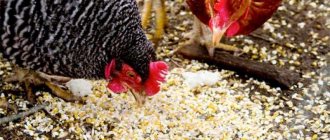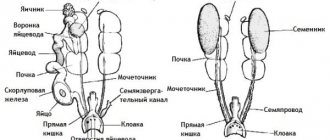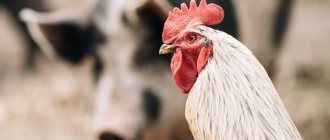Dutch breeders are creating different types of chickens. A distinctive feature of birds is their high productivity, as well as the ability to adapt to different climates. In addition, chickens have a beautiful appearance. One such breed is the Barnevelder chicken. It has an unusual color - each of the bird's feathers consists of alternating rings of two shades, which visually creates a Christmas tree pattern. The bird is widespread both in its homeland and in many European countries.
Historical reference
The breed appeared in 1893, in the small Dutch town of Barnevelder, where its name came from. The impetus for the creation of this type of chicken was the demand for beautiful chocolate-colored eggs. The breeders' work failed because some eggs have terracotta shells.
To create the species, scientists used local chicken varieties and chickens imported from Holland: Cochin, Brahma and Langshan. In 1910, the Barnevelder chicken breed was recognized by the national association.
The breed became so popular that the city's first regional market opened in 1913, giving the province the nickname "Egg City." In honor of this event, a stop “Barneveld Noord” was installed, decorated with an outbuilding with a chicken silhouette.
The popularity of the Barnevelder chicken breed continues to this day. The beauty of the double plumage of chickens is especially appreciated, which is why these birds are classified as decorative varieties.
Where can I buy in Russia?
In our country at the moment it is quite difficult to acquire Barnevelders. In individual farms that have ordered poultry from Europe, they can be found using information from farming forums or word of mouth. Of the large farms where you can get eggs, young or adult birds, perhaps only the following are known:
- “Bird Village” or “Ptica Village”, located near Yaroslavl (contact numbers, +7 (905) 529-11-55);
- “Chicken Yard” in Apsheronsk, Krasnodar Territory (contact numbers).
Interest in this breed in Russia has increased over the past 2-3 years, and one can hope that soon these chickens will be available everywhere without any problems.
Appearance: structure, plumage, features
Externally, Barnevelder chickens are large, but short. The large head on a short neck is crowned with a small leaf-shaped crest of scarlet color. The earrings, face and earlobes are the same shade. The beak of the birds is small, yellow-black in color.
The lumbar, shoulder and dorsal region of the birds is straight and wide, the tail is set high. Barnevelder chickens have lush tail feathers. Roosters have small black braids.
The wings of chickens fit tightly to the body and are short. The sternum is wide and rounded. The legs are powerful, but short. The metatarsals are cast yellow. The fingers are spaced wide apart and end in light-colored claws.
Interestingly, in different countries, barnevelders have different plumage.
Description
Origin
Barnevelder was obtained in Holland in the 20th century. To achieve this, breeders tried to develop a breed of poultry that could lay eggs with brown shells. But their attempt was unsuccessful.
Although if you look at Barnevelder eggs, you can see a reddish tint there. But the breeders still managed to breed chickens with original and beautiful plumage. Thanks to this, the breed has become particularly popular today.
Appearance
Barnevelder birds are distinguished by their large and strong physique, as well as bright plumage. The body is massive, the sternum is wide. The back of females is slightly raised, while in males it “looks” straight. The wings are not long, fit tightly to the body and are set high.
Barnevelder chickens
The head takes on compact dimensions, has a short yellow beak and bright orange eyes. The scallop is red, small in size and presented in the shape of a leaf. The earrings are medium in size and red. The thighs are powerful and well developed, especially in males. The limbs are presented in a yellow color, but there may be a grayish coating. This feature applies more to females.
The Barnevelder breed is distinguished by dense and thick plumage in the neck area, which still has the property of shimmering. The color is quite interesting. If the feathers are red-brown in color, then they have a double edge. One goes along the edge of the feather, and the second goes along the inside of the feather. There is plumage of a dark blue color scheme. You can also find Barnevelders in pure white or black. But selection today does not stand still, so it was possible to obtain birds with double coloring and a silver frame. But what Dekalb chickens look like and how easy it is to breed them is indicated here.
Video shows what Barnevelder chickens look like:
Productivity
The Bokrovskaya bavristaya chicken, like the Barnevelder breed, is a representative of the meat-and-egg direction. The weight of a male reaches 3-3.5 kg, but that of a female is 2.5-2.8 kg. The meat has an incredible taste and is also very tender. The birds quickly gain weight, and the little chicks grow rapidly. At the same time, they are absolutely not demanding on nutrition. If the chickens are free-range, they will be able to get their own food.
Chickens begin to lay eggs at 7-8 months. This is quite late. But the females cope well with the responsibilities of the mother. They are able to hatch not only their own chickens, but also the offspring of those chickens whose maternal instinct is poorly developed. The survival rate among chickens is high. It is 95%. In addition, young animals rarely get sick. But how the Lakenfelder chicken is bred, and what its productivity is, is indicated here.
You may also be interested in information about breeding the Welsumer chicken breed.
Feather cover is an aesthetic pleasure for the breeder
Classic and other acceptable color variations
The classic color of Barnevelder chickens is red and black. Pure white and black feathers are recognized. The recognition of other colors remains controversial.
In dwarf breeds, on the contrary, exclusively silver plumage is considered correct.
White and black Barnevelders are no different from other breeds of similar color. A cross with silver feathers is being developed in Holland, but it has not yet been officially recognized.
It’s more difficult with two-color barnevelders. Their color follows precise rules: alternating two colors on the feathers. The color ends in white or black, depending on the overall color of the bird.
Each country has its own achievements
Some chickens have red feathers alternating with black. This color is officially recognized in America.
Due to the tendency to mutate into lavender, lavender-red hens are increasingly appearing. There is no official recognition of the variety.
Distinct stripes are noticeable on Barnevelder chickens with black and silver plumage. In the Netherlands, the white and gold color is not recognized. But laying hens of this color are not uncommon.
The partridge color of the Barnevelder is recognized only in England. There are also autosex variants of plumage, but they are classified as defective.
The Barnevelder cockerel is easily distinguished by its modest color, compared to the bright plumage of laying hens.
Diseases
Birds rarely get sick. If the conditions of detention are violated, non-infectious diseases more often develop:
- joint diseases;
- helminthic infestations;
- parasitic diseases.
- Parasites
- Infectious
- Other
Chicken mite
How to treat a chicken coop and how to treat a bird. Description of drugs and methods of control
Read
Coccidiosis
Thirst, loss of appetite, swelling, bloody droppings, anemia, weakness, poor coordination
Read
Ascariasis
Loss of appetite, liquid droppings, pale mucous membranes of the comb, limbs, ruffled plumage, lethargy, vomiting
Read
Amidostomiasis
Symptoms of the acute form: apathy, general weakness, decreased or lack of appetite, breathing problems, unsteady gait, retarded growth and development
Read
Prostagonymosis
Decreased mobility, loss of appetite, unsteady gait, bloating, fever, impaired egg laying, exhaustion
Read
Knemidocoptic mange (“lime foot”)
Acute symptoms: light gray bumps appear on the legs, the bird limps and stands on one leg, the cloaca and joints become inflamed, the beak is deformed
Read
Heteracidosis
Symptoms: indigestion, diarrhea, loss of appetite, lethargy, decreased egg production, retarded growth and development
Read
Trichomoniasis
Symptoms of the acute form: fever, depression and loss of appetite, diarrhea with gas bubbles and a putrid odor, enlarged goiter, difficulty breathing and swallowing
Read
Pullorosis (typhoid fever, salmonellosis)
Weakness, lack of coordination, drooping eyelids, difficulty breathing, lack of appetite, indigestion
Read
Colibacillosis
Lack of appetite, thirst, sudden increase in temperature, pale scallops, diarrhea
Read
Pasteurellosis
Fever, foamy mucus, change in stool color, refusal to feed, thirst, lethargy, wheezing, heavy breathing
Read
Marek's disease
Paralysis of the limbs, difficulty breathing, severe exhaustion and loss of strength, refusal of food and water, pallor of the scallop
Read
Gumboro disease
Diarrhea, loss of appetite, trembling legs and head, sudden death
Read
Laryngotracheitis
Weakness, swelling of the neck, difficulty breathing, cough, wheezing, blood clots in the mucus released when coughing, lack of appetite, indigestion
Read
Bird flu
Refusal to eat, anorexia, diarrhea, purulent discharge, hoarse breathing, greenish-brown droppings, seizures, darkening of the ridge
Read
Newcastle disease
Decreased appetite, fever, respiratory distress, immobility, conjunctivitis, bloody diarrhea
Read
Apteriosis
Complete or partial absence of plumage, loss of tail feathers, broken embryonic fuzz in young animals, delayed growth of plumage, pecking
Read
Pterophagy
Plucking and eating feathers. What is the reason, why does it require urgent intervention and how to prevent the disease?
Read
Yolk peritonitis
Symptoms of the acute form: loss of appetite, gray-green color of feces, sudden drop in egg production, calcareous deposits on the shell, bluish tint and baldness of the abdominal skin
Read
Cloacite
Symptoms: depressed state, decreased appetite, weight loss, increased need for water, loss of plumage, inflammation and bulging of the cloaca, the presence of ulcers on the mucous membrane, decreased egg production
Read
Cull rates
Only healthy individuals that fully comply with quality standards are allowed for breeding. For Barnevelder chickens, the following are considered stop factors:
- narrowness of the sternum;
- enamel on earlobes;
- scarcity of plumage;
- shabby tail;
- weakness;
- narrow or short body.
Carefully examine the Barnevelder hen or rooster before purchasing if you choose to breed them for sale. Make sure that the individual you are purchasing does not have any of the listed defects. Otherwise, it will be difficult to sell the products.
Living conditions
Content type
When deciding where it is better to keep colored sasso broilers, in a cage or a chicken coop, you first need to decide for what purpose the bird is raised.
If it is to produce meat, then it is more rational to use cages, since in them broilers will be sedentary, which will have a positive effect on their precocity.
If it is also to obtain eggs, then it is better to place the birds in a spacious chicken coop with possible walking, for which a special pen should be made near the barn.
In this case, walking on the farmstead allows the chickens to get all the useful microelements missing in the feed, which have a positive effect on their well-being, and, as a result, increase the quality of egg production.
Planting Density
In the case of keeping colored sasso broilers in a chicken coop, it is necessary to comply with the area standards. They depend on the age of the chickens and are:
- for week-old chickens - 30 heads per 1 square meter;
- for two-week-old broilers – 15 heads per 1 square meter;
- for menstruation – 10 heads per 1 square meter;
- for adults – no more than 5 heads per 1 square meter.
If you plan to keep them in cages, then you can move chickens there only after they are one month old. 1 square meter can accommodate 15 month-old and 10 adult birds.
Environment
Regardless of the type of keeping Sasso broilers, it is necessary to take care of the environment in the room where they will live.
The air temperature inside the chicken coop should be constant, ranging from +16 to +21 degrees. To maintain optimal temperature conditions, heaters are installed in winter, and special cooling units are used in summer.
It is important to exclude the appearance of drafts, especially in the cold season. Otherwise, the chickens will begin to lose feathers and get sick.
Case is not excluded.
It is also necessary to install ventilation equipment that will eliminate the accumulation of mustiness and harmful gases: carbon dioxide and ammonia. If it is not possible to install such equipment, the number and duration of ventilation should be increased.
The humidity in the room should be 55–60%.
If broilers are kept on the floor, you need to provide them with bedding made of hay, straw or dry sawdust. Peat will also work.
Character and its reflection on the behavior of birds
Barnevelder chickens are famous for their calm disposition and intelligence. When breeding them, breeders do not encounter problems caused by the nature of their pets. Birds are good-natured, not afraid of people and easily make contact.
Due to their large size, there is a misconception that Barnevelder roosters can be aggressive. In fact, birds are friendly and calm towards children playing in the yard.
Birds get along well with people. They communicate closely with their acquaintances and are not afraid of being picked up. They love affection. They do not conflict within the species, as well as with other pets.
Some breeders note the phlegmatic behavior of laying hens. But calmness only adds to the breed’s advantages.
In general, barnevelders are unpretentious. They are not afraid of frost, so they easily get used to life in the Russian climate. The breed is suitable for beginners.
Additional facts
Because of their chic appearance, Barnevelders with a double border are mainly bred in Russia. Moreover, more as an ornamental breed - “for beauty in the backyard”, and the eggs are sold for incubation. Therefore, the taste of eggs, and especially barney meat, remains a mystery to ordinary people. Although farmers who have tried the meat of extra roosters claim that it is very tasty and is a little reminiscent of goose.
Due to the fact that most producers now pay more attention to external characteristics rather than shell color, truly dark eggs (chocolate) are now becoming increasingly rare. The predominant color is light brown, similar to terracotta.
A high-quality egg is always rich in color, rough, with small specks.
This rare breed is worth breeding if you want to have up to 180 eggs per year of a very beautiful color. And for lovers of beauty, there is a dwarf form that will allow you to save on the space of the chicken coop and feed, and amuse your eyes with a painted chicken.
Productive indicators of the breed
Barnevelders belong to the meat and egg breed, delighting breeders with dietary meat and nutritious eggs. Sexual maturity is reached at 6-7 months, but late egg production is compensated by maintaining productivity in the winter.
With the beginning of egg production, the eggs appear small, but over time their weight increases to 60-65 g. The color of the shell can change from rich brown to terracotta. A Barnevelder rooster weighs up to 3.5 kg, a laying hen weighs 2.8 kg. One hen produces 180-200 eggs per year.
There is also a dwarf variety of barnevelders. The weight of such a rooster reaches 1100 grams, and the hen – 900 grams. Eggs obtained from a mini-laying hen weigh 40 g.
During molting, Barnevelder hens do not lay eggs. The process takes 2 months in the fall. By the age of 3-4 years, the egg production of laying hens decreases.
Hens of this breed have good maternal instinct - breeding without an incubator is possible. Chick survival rate is up to 95%.
Barnevelder chickens
On the first day, chickens weigh no more than 40 grams. As a rule, they begin to yell and become active immediately after drying out and feeding for the first time. Small squeakers are covered with fluffy fluff of different colors. They can be light brown, black, red or cream in color.
As it grows, this color will disappear. The chicks will begin to grow feathers and become more like their parents. The fledging speed is average, but this does not cause discomfort to either the chicks or their owners.
Due to the fact that the hen took all the best genes from her ancestors, her babies have high vitality. The average survival rate among squeaky babies is about 95%.
They are born with innate resistance to many infectious diseases. And strong immunity. But, nevertheless, chicks still need proper conditions for full growth and development.
Here's what they need:
- Balanced nutrition using specialized feed. Which contains a large percentage of protein. Greens, vegetables, vitamins and minerals are also mandatory components of the daily menu.
- Good and clean living conditions. The chicks should have room! Therefore, it is better to keep them not in the usual box, but in a cage or a specially prepared room.
- The most important thing from the first days of life is warmth. Initially, babies need to maintain a consistently high temperature. Within 30 degrees. As you grow, you can gradually make the air cooler, lowering the temperature by 2-3 degrees per week.
- And of course, chicks need to improve their health. This can be done with the help of preventive vaccinations. For example, adding fish oil, yeast and other nutrients to food.
General content recommendations
Poultry house
Barnevelder chickens are unpretentious, but there are a number of recommendations that must be followed.
The poultry house can be built from any material, the main thing is that the resulting room is dry and draft-free. For the winter, be sure to insulate the floor.
For construction, you can use wood, bricks or cinder blocks. The difference is that chicken coops made of wood, well-built and without cracks, do not need to be insulated when cold weather sets in. Brick or cinder block poultry houses must be insulated or heated.
Walk
Barnevelders are not suitable for cage keeping. They need space to remain mobile. Since chickens love to look for treats in the ground, the walking area is fenced with a 1.5-2 m fence so that the birds do not reach the garden.
Despite the popular belief that barnevelders do not fly, this is a mistake. Birds, if necessary, are able to rise to considerable heights.
It is important to create a large walking area to provide mobility for the birds. When kept in cramped conditions, the muscles of Barnevelder chickens atrophy.
With the onset of cold weather, they are transferred to the poultry house, but periodically they make a commotion in the room to force them to warm up.
In winter, Barnevelders are kept in a chicken coop, but in good weather (no wind or frost) they are allowed out for a walk.
Content in figures and facts
The area for keeping barnevelders is calculated using the formula: 3-5 birds per 1 sq. m. Lighting intensity in the poultry house – 6 W/sq. m. Place the lamps evenly at a height of 1.8-2.2 m.
Daylight hours last 14 hours. The normal temperature for laying hens is 12-15 degrees. Air humidity is maintained at around 70%. In summer, make sure that the air in the room does not heat above 28 degrees. Overheating leads to decreased egg production.
Inventory
The poultry house is equipped with drinking bowls so that barnevelder chickens always have access to clean water. Feeders can be made from any material, but they have a lid to prevent birds from scattering food.
Separately, a trough with shell rock and chalk is installed - the chickens need them to normalize digestion. They also place a container with ash and sand of sufficient size so that the birds can swim there.
Dry baths of sand and ash protect chickens from parasites living on the skin and in feathers.
Perches are placed at a height of 1 m in increments of 30-35 cm. The diameter of the perches is 5 cm. Nests are equipped in dark places, filling them with sawdust, husks and fluff.
Ventilating the chicken coop: causes and consequences
Ventilation equipment in the chicken coop with the onset of cold weather is one of the primary tasks for breeders. Natural ventilation is suitable for the warm season, when you can simply open the doors and windows in the room.
With the arrival of winter, all cracks, windows and doors are closed so that the chickens do not catch a cold. At this time, harmful substances begin to accumulate in the room, an excess of which affects the immune system of barnevelder chickens, leading to illness and death.
The main enemy is ammonia released from chicken droppings. An excess leads to impaired productivity and weakened immunity. Remember that opening doors and windows will help ventilate the gas, but may cause frostbite in your chickens.
Poor ventilation contributes to rotting of bedding and feed, leading to the growth of bacteria. Installing ventilation will solve these problems.
Disinfection: when and how
Barnevelders love to dig into the litter, spill food, and spill water. As a result, the chicken coop becomes a breeding ground for bacteria and parasites.
Don't wait for bacteria to harm your birds. Disinfect once every 2 months to prevent germs from multiplying.
Cleaning the chicken coop is not only disinfection, but also washing the premises. They wash everything: walls, floors, perches, feeders, ceiling. It is important to carry out the procedure not just with a wet rag.
A good disinfectant is a solution of water and apple cider vinegar. To protect the room from germs for a long time, the walls, after washing, are covered with lime.
Among strong disinfectants, formalin is popular. But be careful when using it yourself. Formalin is a dangerous chemical. When working with it, use a respirator or gas mask.
Bleach is another reliable protector against bacteria. They treat the entire room, including the floor. While the poultry house is being treated with any chemicals, the chickens are transferred to another room.
Incubation
Due to the developed maternal instinct, there is no urgent need for an incubator. If you need an incubator for breeding, then it maintains a temperature of about +37 degrees.
Table of temperature and humidity modes
| Period |
